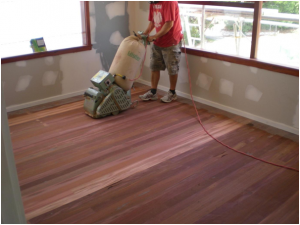Given the name, you might be under the impression that a floating floor is a type of flooring in its own right; however, it is actually a method of installing different flooring types that are growing increasingly popular in modern homes.

A floating floor is any type of flooring that is installed without being fixed to the base floor of a building. Generally, this means laminate or engineered wood flooring, but floating floors can be used for some types of ceramic tile flooring, too. Whatever flooring you decide upon, it is laid directly onto a base floor underlay and is designed to fix together to provide stability. The underlay helps to hold the boards in position and stop slipping.
Advantages
Floating floors do give certain advantages when installing a new floor into your home. They are very quick and easy to install as the flooring is designed to fit together easily. Underlay can also be laid directly onto concrete, and its presence improves both the noise and the heat insulation in the home.
All of this means that fitting a floating floor can be a great DIY project, even for an inexperienced homeowner. However, if you do decide to rely on a professional, it is a job that can be done with minimal disruption to running your home and completed very quickly. It is also very quick and easy to uninstall when you decide to change your home’s flooring.
You can even install this in your garage to make the floor more suitable for walking around on. When doing this why not add some garage shelving sourced at sites including https://www.garage-shelving.co.uk.
Drawbacks
There are some drawbacks, of course. Floating floors will not suit every home installation, and you should always take professional advice from a reputable online company before installing anything yourself.
You should never lay a floating floor directly onto wooden joists, and you will need to install a thick plywood cover to create a flat surface for the underlay to sit on. Fitting this first can complicate matters if you are planning a home DIY project. Most types of luxury vinyl tiling (LVT) or parquet blocks require glue to fix the flooring to the floor base, so if you are planning on this type of flooring solution for your home, floating floors are not appropriate. Despite these drawbacks, floating floors are a versatile and efficient way of installing a new flooring solution when fitted correctly.
